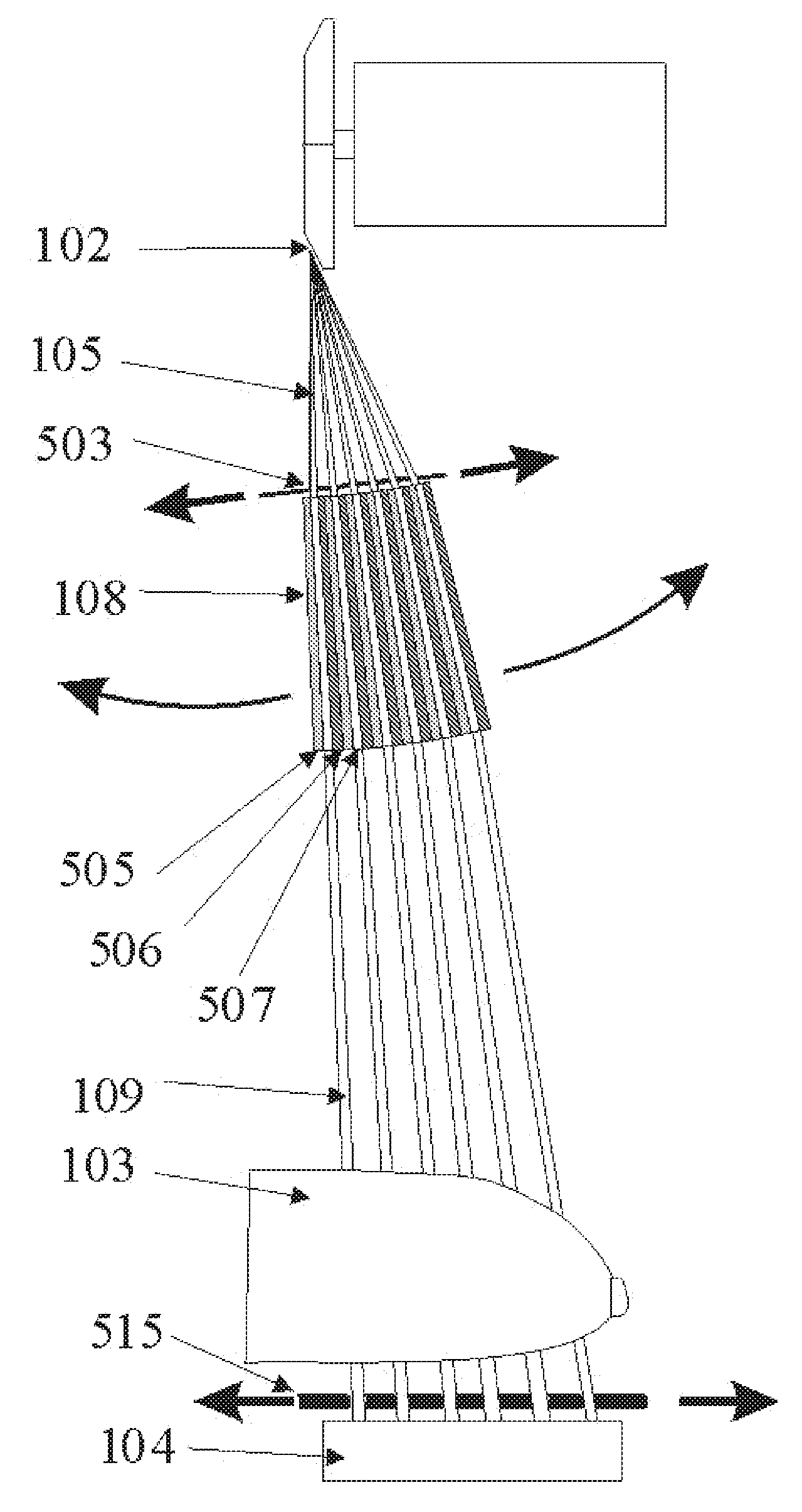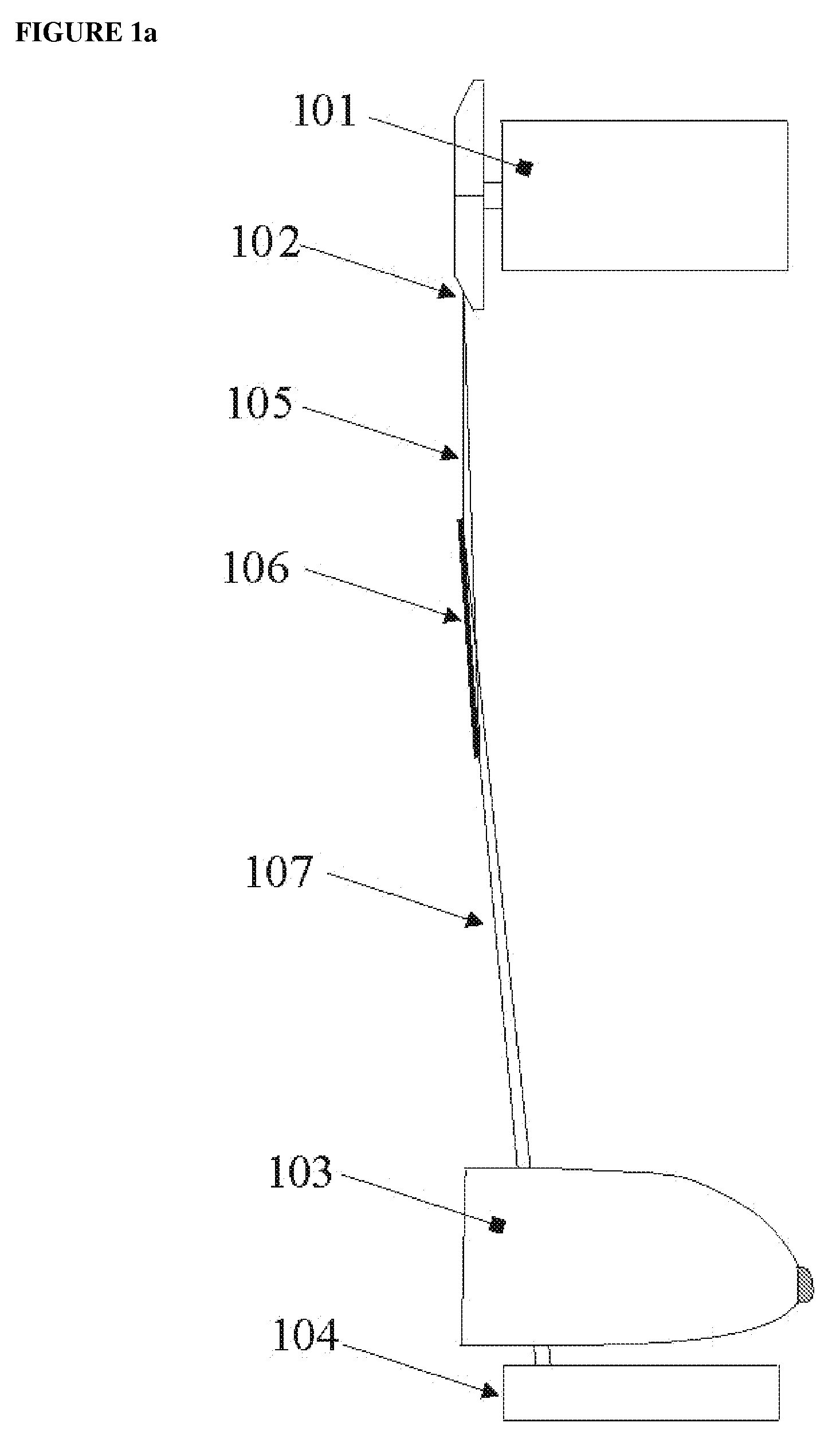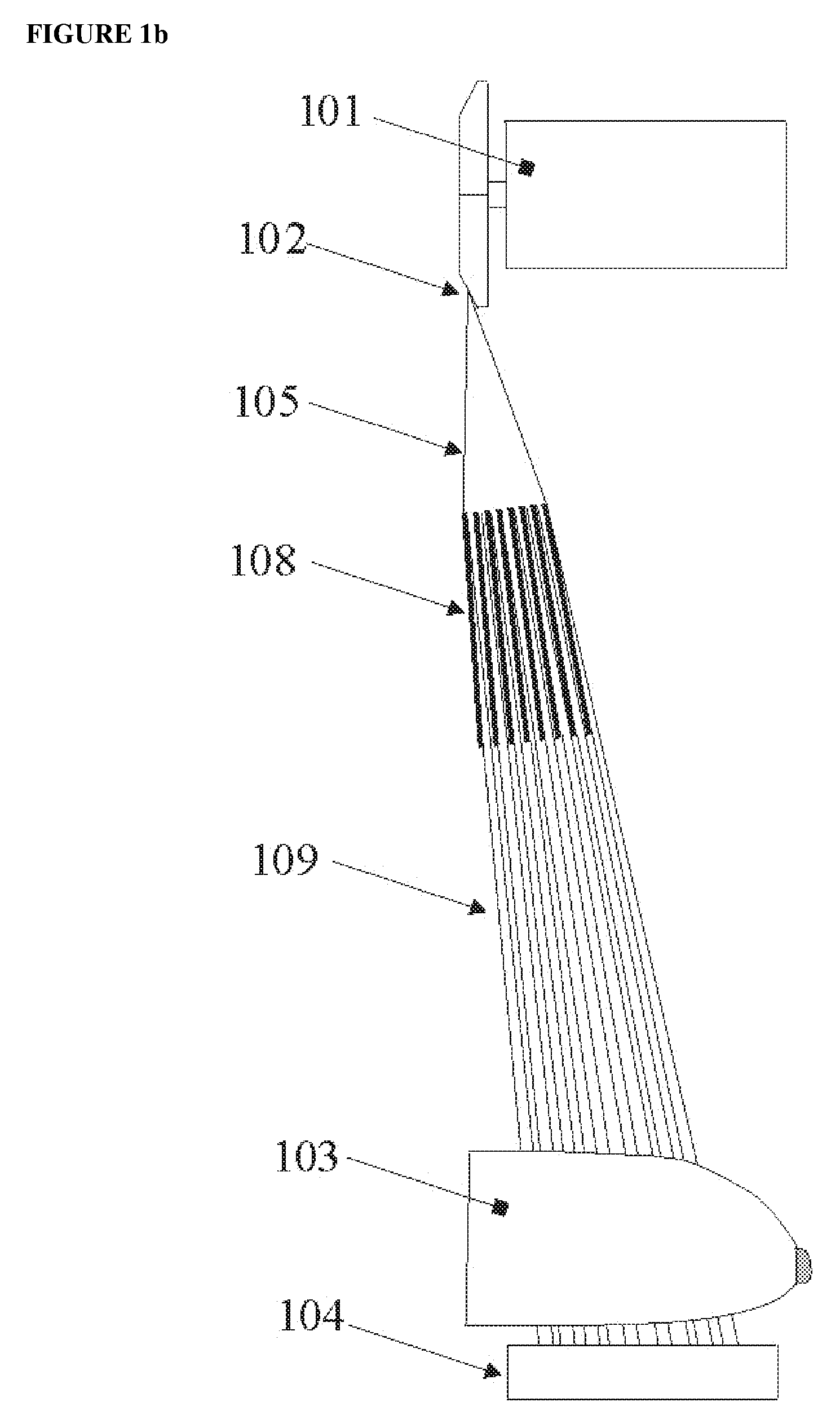Mirror mounting, alignment, and scanning mechanism and scanning method for radiographic x-ray imaging, and x-ray imaging device having same
a radiographic x-ray imaging and mirror technology, applied in the field of imaging systems, can solve the problems of displacement error, large or small displacement error, and no mechanism has been developed to accurately and precisely mount, align, and scan the mirrors, and achieve the effect of reducing scattering
- Summary
- Abstract
- Description
- Claims
- Application Information
AI Technical Summary
Benefits of technology
Problems solved by technology
Method used
Image
Examples
Embodiment Construction
[0031]Description of the invention will now be given with reference to FIGS. 2-7. It should be understood that these figures are exemplary in nature and in no way serve to limit the scope of the invention, which is defined by the claims appearing hereinbelow.
[0032]A traditional radiographic X-ray imaging system has a point-source X-ray tube and an X-ray-sensitive imaging detector (either film / screen or digital): X-ray photons emitted from the focal spot pass through the tissue or sample under study where they are attenuated by an amount that depends on the composition and density of the sample. The resultant image is thus an attenuation map of the sample, integrated along the direction of X-ray propagation.
[0033]For many applications, increased signal contrast (and lower dose, for medical applications) can be obtained using mono-energetic X-rays, as produced, for example, by graded, periodic multilayer X-ray mirrors. One configuration utilizing X-ray mirrors is shown in FIG. 1a, in ...
PUM
 Login to View More
Login to View More Abstract
Description
Claims
Application Information
 Login to View More
Login to View More - R&D
- Intellectual Property
- Life Sciences
- Materials
- Tech Scout
- Unparalleled Data Quality
- Higher Quality Content
- 60% Fewer Hallucinations
Browse by: Latest US Patents, China's latest patents, Technical Efficacy Thesaurus, Application Domain, Technology Topic, Popular Technical Reports.
© 2025 PatSnap. All rights reserved.Legal|Privacy policy|Modern Slavery Act Transparency Statement|Sitemap|About US| Contact US: help@patsnap.com



